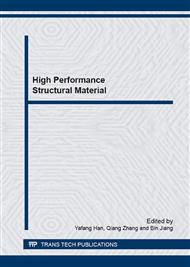p.237
p.242
p.249
p.255
p.262
p.266
p.271
p.277
p.283
Effect of Mullite Content on the Properties of Silica-Based Ceramic Cores
Abstract:
In this study, mullite was used as the addition to prepare silicon based ceramic cores, and the effect of mullite content on the mechanical and chemical properties was investigated. The phase composition and the morphology of the ceramic cores were characterized by X-ray diffraction (XRD) and scanning electron microscopy (SEM) respectively. The results indicated that the shrinkage was induced by the addition of mullite and contaminations. The intensity of pre-heated cristobalite increased sharply with the mullite content increasing, which could improve the high temperature deformation simultaneously. However, mullite was difficult to remove by reacting with KOH which decreased the leaching rate of ceramic core. When mullite content was 15 wt%, the shrinkage of ceramic core was 0.78%, the creep at 1540 °C for 1 h was 0.3 mm and the leaching rate was 0.1 g/min, which meets the need of ceramic core of hollow turbine blades.
Info:
Periodical:
Pages:
262-265
Citation:
Online since:
April 2015
Authors:
Price:
Сopyright:
© 2015 Trans Tech Publications Ltd. All Rights Reserved
Share:
Citation:


